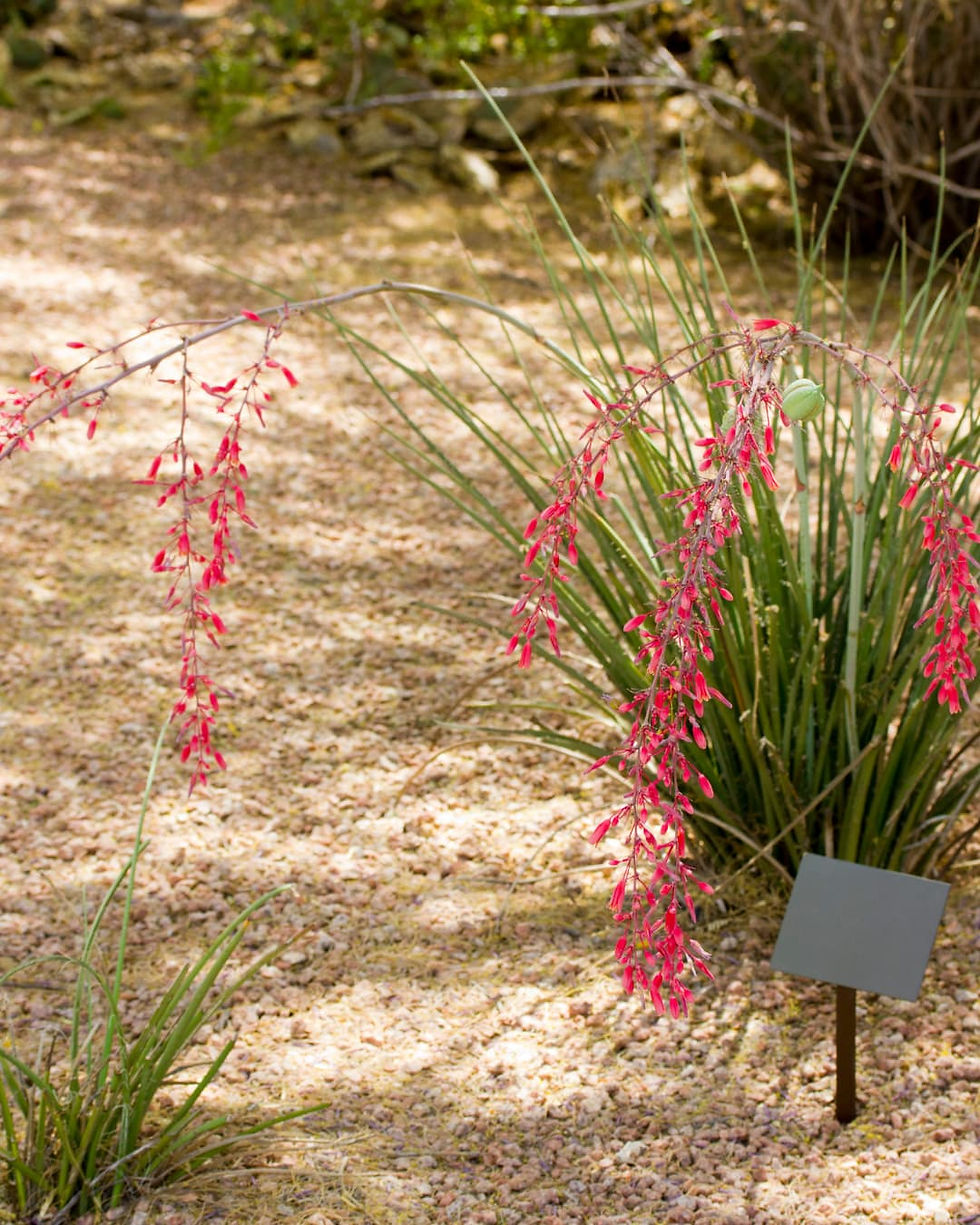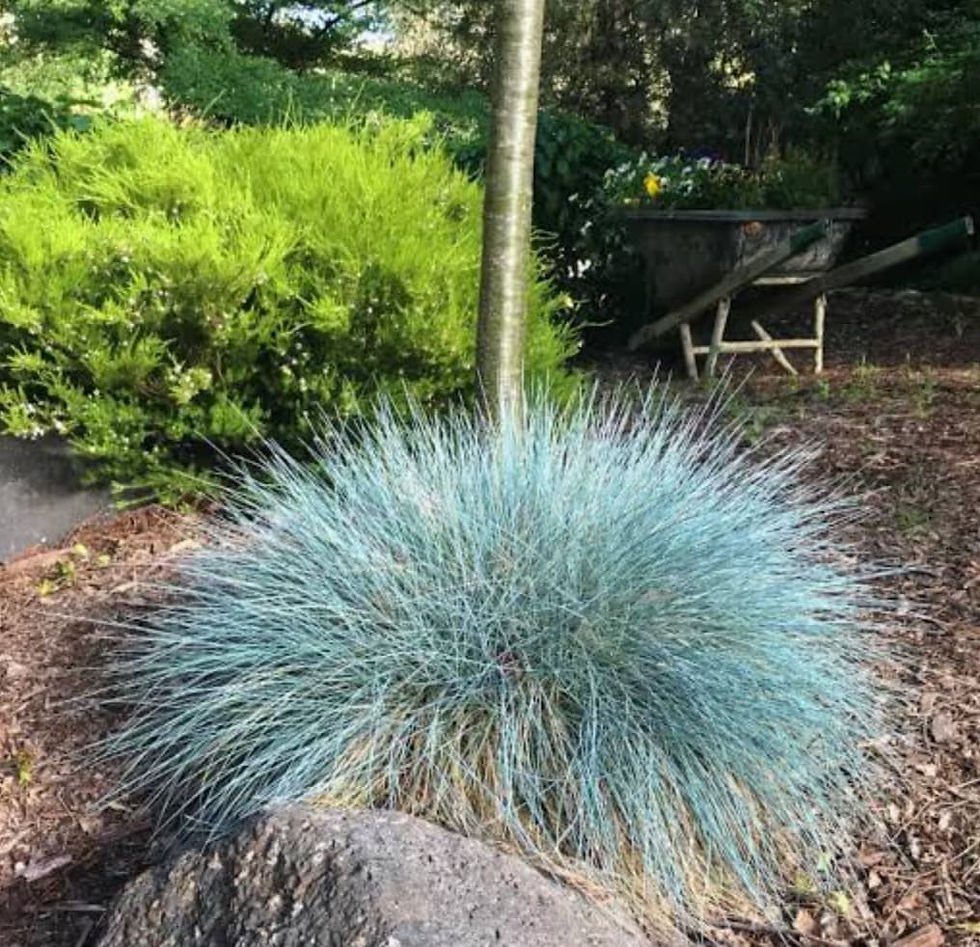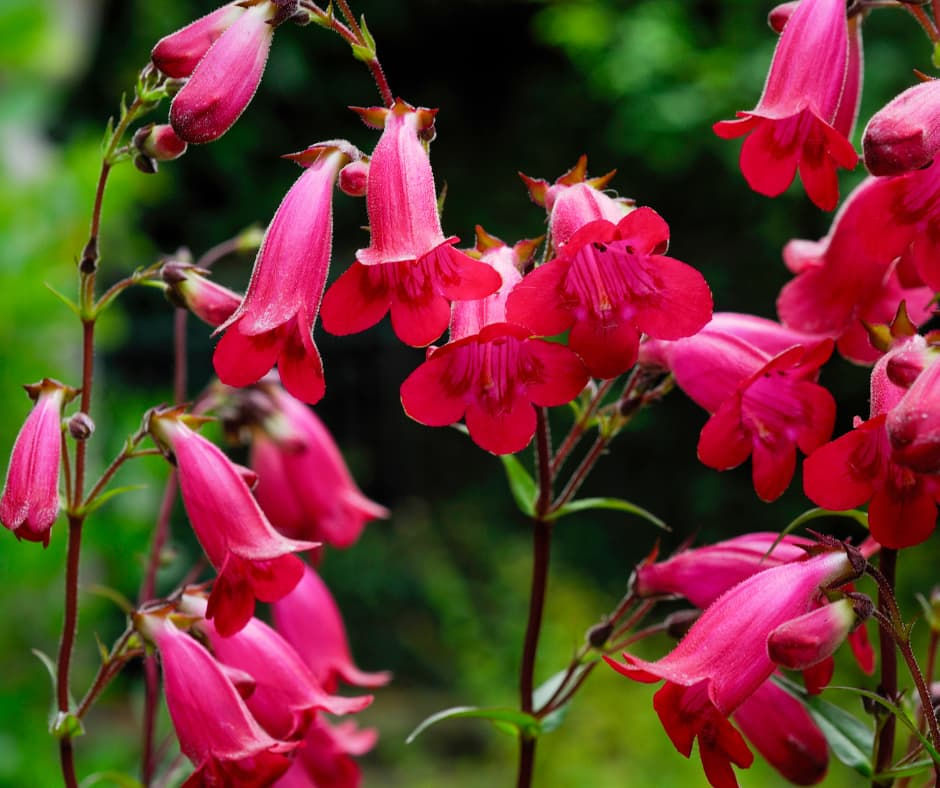Utah Landscapes: 5 Plants That Need Minimal Watering
- McKenna Hines
- Jul 30
- 9 min read

Why Drought-Tolerant Plants Matter in Utah Landscapes
Utah's arid climate and growing population make water conservation a priority. That’s why drought-tolerant plants are essential for Utah landscapes. They offer the beauty of traditional gardens without the constant need for irrigation.
Using low-water plants isn’t just a trend—it’s a smart response to the realities of living in a desert environment. Successful landscaping Utah yards means working with nature, not against it. That means selecting plants adapted to heat, drought, and rocky soil.
The best drought-tolerant plants require little maintenance, resist pests, and thrive in sun-soaked areas. These species contribute to healthy, resilient Utah landscapes that don’t compromise on curb appeal.
By choosing water-wise flora, homeowners also reduce their environmental footprint. Landscaping Utah homes with drought-tolerant plants can lower utility bills and lessen strain on public water systems.
Utah State University Center for Water-Efficient Landscaping says, “Plants can be used to conserve energy or water, block undesirable views or noise (dense plant material), control erosion on steep slopes (lower growing groundcovers) and attract birds, butterflies and bees.”
Let’s dive into five standout plant choices that require minimal watering while keeping Utah landscapes vibrant, colorful, and functional.
Russian Sage: Colorful, Hardy, and Low-Water
Russian sage is a favorite among Utah landscapes because of its striking lavender-blue flowers and its ability to thrive in hot, dry conditions. This perennial is both ornamental and incredibly practical for landscaping Utah properties.

Russian sage blooms from mid-summer into fall, adding long-lasting color to your yard. Its silvery foliage also offers a nice contrast to the typical greens found in most gardens. For Utah landscapes, this visual variation is especially valuable.
Aside from beauty, Russian sage is extremely drought-tolerant once established. It grows well in sandy, well-drained soils, which are commonly found in areas where landscaping Utah requires smart, sustainable solutions.
It also resists pests and deer, and its aromatic leaves even help repel insects. This resilience makes it ideal for homeowners who want low-maintenance Utah landscapes that stay attractive all season long.
Incorporating Russian sage into your garden is a simple way to support water conservation while keeping your landscaping Utah goals fresh and flourishing.
Red Yucca: Bold Texture Meets Low Maintenance
Red yucca, also known as Hesperaloe parviflora, is another standout in drought-tolerant Utah landscapes. With its long, arching leaves and vibrant red flower stalks, it brings architectural interest to any garden.

What makes red yucca perfect for landscaping Utah yards is its incredible adaptability. It tolerates extreme heat, poor soil, and dry conditions without skipping a beat. This makes it a go-to choice for rock gardens or xeriscapes.
The tubular flowers also attract hummingbirds and pollinators, bringing life and movement to your yard. This benefit adds a layer of biodiversity to Utah landscapes, which can otherwise be difficult to achieve in low-water environments.
Red yucca is also very low maintenance. It doesn’t require pruning or fertilizing and grows steadily over time. For busy homeowners focused on sustainable landscaping Utah projects, that ease is invaluable.
Whether used as a border plant or a focal feature, red yucca contributes both form and function to well-designed Utah landscapes.
Blue Fescue: Soft Grass, Strong Impact
Blue fescue offers cool-toned beauty and durability, making it a top choice for ornamental grasses in Utah landscapes. This small, mounding grass brings texture, color, and year-round interest to drought-tolerant gardens.

Its steely blue color provides a striking contrast in warm, sandy environments. This makes it a valuable component in landscaping Utah front yards or commercial spaces where visual balance is important.
Blue fescue thrives in full sun and doesn’t require much water after establishment. It's one of those hidden gems in Utah landscapes that combine beauty with practicality. Plus, it pairs well with bolder elements like rocks or desert flowers.
In mass plantings, blue fescue can be used to create soft, undulating borders. It also works wonderfully between flagstones or pavers, adding a natural, airy touch to landscaping Utah paths and patios.
Because it grows slowly and maintains a tidy shape, blue fescue is ideal for low-maintenance Utah landscapes that prioritize both aesthetics and sustainability.
Penstemon: Native Beauty with Pops of Color
Penstemon is a native wildflower that’s gaining popularity in Utah landscapes thanks to its colorful spikes and pollinator-friendly appeal. With hues ranging from pink and red to purple and white, it provides seasonal variety without heavy watering.

Because it’s native, Penstemon is naturally suited to Utah’s climate. This means it’s perfectly at home in soil types that might challenge more traditional plants. For anyone landscaping Utah yards with a focus on longevity, Penstemon is a wise choice.
These plants bloom from late spring through early summer and attract hummingbirds and bees. This not only adds life to your yard but also supports local ecosystems—something increasingly important in Utah landscapes.
Penstemon’s drought tolerance makes it ideal for xeriscaping. It thrives on neglect, needing only occasional trimming or thinning to keep it in peak shape. That kind of independence is perfect for landscaping Utah properties with minimal effort.
Adding Penstemon to your garden is a surefire way to infuse your Utah landscapes with vibrant color and ecological value.
Pairing Plants for Visual Balance
Choosing the right drought-tolerant plants is only part of the equation. Successful Utah landscapes require thoughtful combinations to ensure visual harmony and seasonal interest. Pairing different textures and colors brings cohesion to your outdoor design.
In landscaping Utah gardens, consider mixing soft grasses like blue fescue with vertical elements like Russian sage or red yucca. This contrast in form adds movement and creates focal points throughout your yard.

Use repetition to tie areas together—repeat plants like Penstemon in multiple zones to create rhythm.
Utah landscapes benefit from this strategy as it makes even small spaces feel organized and intentional.
Consult the Utah State University Yard and Garden Extension for landscaping tips and detailed information.
Don’t forget seasonal variation. Choose plants that bloom at different times to keep your landscaping Utah projects fresh year-round. This way, there’s always something visually engaging from spring to fall.
By pairing plants strategically, you’ll elevate your Utah landscapes from functional to fantastic—while still keeping water usage to a minimum.
Rock Mulch Enhances Water Retention in Utah Landscapes
One of the best-kept secrets in water-wise gardening is the use of rock mulch. It not only improves aesthetics but also conserves moisture, making it ideal for Utah landscapes. It pairs beautifully with drought-tolerant plants and prevents weed growth.
Gravel or crushed stone is commonly used in landscaping Utah gardens to reflect heat away from plant roots and reduce evaporation. This is especially important in areas exposed to full sun throughout the day.

Rock mulch also adds texture and helps define planting zones. Utah landscapes often incorporate neutral-toned stones to complement native flora without distracting from the plants themselves.
When used around plants like blue fescue or red yucca, rock mulch creates visual contrast that highlights the plant’s structure and color. It's one of the most effective upgrades you can make in landscaping Utah with sustainability in mind.
If you're looking to maximize water efficiency and style, combining rock mulch with your favorite drought-tolerant plants is a smart move for Utah landscapes.
Designing with Elevation and Drainage in Mind
Elevation plays a key role in water-efficient garden design. In Utah landscapes, slight changes in elevation can control how water moves and help plants thrive in their ideal conditions. This makes elevation a key tool in landscaping Utah successfully.
Create mounds or berms with drought-tolerant plants at the top, where water drains fastest. Blue fescue and red yucca thrive in these elevated spots, adding dimension and movement to Utah landscapes.
Lower areas can catch and retain more moisture, ideal for native plants like Penstemon. In landscaping Utah terrain, using these natural drainage patterns helps plants establish stronger root systems with less water.
Use landscape rocks and boulders to stabilize slopes and define elevation transitions. These materials not only prevent erosion but also reinforce the drought-smart nature of your Utah landscapes.
Designing with drainage in mind ensures your landscaping Utah goals align with nature, reducing maintenance while improving plant performance.
Low-Water Container Gardening
Container gardening isn’t just for patios—it’s an excellent method for expanding water-wise Utah landscapes. When chosen carefully, containers provide structure and allow for creative plant groupings that still prioritize conservation.

Use lightweight, porous containers that encourage good drainage. For landscaping Utah patios or small spaces, containers offer flexibility and visual appeal without the need for large planting beds.
Fill them with drought-tolerant plants like Russian sage or blue fescue. These plants thrive in confined spaces and bring character to Utah landscapes even in limited square footage.
Containers also help you move plants based on seasonal sun exposure. This adaptability is great for landscaping Utah properties with varied microclimates or challenging sun angles.
Whether you use them as accents or centerpieces, containers add depth and variety to your Utah landscapes—no sprinkler system required.
Incorporating Hardscapes with Native Plants
Hardscaping complements plantings in any well-designed yard. In Utah landscapes, natural stone pathways, patios, or benches work in harmony with native, drought-tolerant flora. This approach enhances both form and function.
Choose sandstone or local quarried stone to match the tones and textures of your landscaping Utah environment. These materials provide contrast to foliage while reinforcing regional aesthetics.
Planting drought-resistant plants between stones—such as thyme, blue fescue, or red yucca—softens the hard edges and integrates greenery into the hardscape. These combinations are essential in stylish Utah landscapes.
Hardscaping also reduces water needs by limiting turf or thirsty groundcover. In many landscaping Utah projects, hardscapes cover large areas that once required high irrigation levels.
By combining stone with native plants, you create Utah landscapes that are both durable and deeply rooted in regional style.
Benefits of Native vs. Non-Native Plants
When designing water-wise Utah landscapes, native plants usually outperform non-native varieties. They’re adapted to local climate conditions and require less water, fewer chemicals, and minimal care—perfect for landscaping Utah naturally.

Penstemon and red yucca are great examples of native or regionally-adapted plants that resist pests, tolerate drought, and support local pollinators. These plants ensure Utah landscapes remain beautiful with very little input.
Non-natives, while sometimes showy, often demand more water and are less hardy during extreme temperatures. In landscaping Utah properties sustainably, favoring native species ensures better long-term results.
Native plants also help preserve Utah’s biodiversity. They support local birds, bees, and butterflies in ways that non-native ornamentals often can’t. This environmental role adds value to your yard beyond its visual appeal.
For healthier, hardier Utah landscapes, going native isn’t just a trend—it’s the smartest way to garden in harmony with the land.
Seasonal Maintenance Tips
Even low-water plants need occasional care to stay their best. For Utah landscapes, seasonal upkeep ensures that your drought-tolerant garden looks vibrant year-round without consuming excess resources.
In early spring, prune dormant perennials like Russian sage to encourage new growth. In landscaping Utah yards, this timing ensures you’re not cutting back live stems too early or too late.
Check drip irrigation systems or hose placements to ensure even watering, especially during dry months. Mulch can be refreshed in the spring to suppress weeds and retain soil moisture in Utah landscapes.
In late summer, deadhead Penstemon or remove seed stalks to tidy up appearance and encourage re-bloom. For grasses like blue fescue, thinning or dividing every few years helps maintain shape and vitality.
These small seasonal adjustments support sustainable landscaping Utah practices while ensuring your yard remains beautiful and efficient.
Wildlife Benefits of Water-Wise Gardening
One of the hidden perks of creating drought-friendly Utah landscapes is the boost it gives to local wildlife. Birds, butterflies, and beneficial insects are drawn to plants like Penstemon and Russian sage.

In landscaping Utah homes with biodiversity in mind, select plants that flower at different times of the season. This staggered blooming schedule ensures nectar is available throughout the year.
Avoid using pesticides and opt for organic compost or mulch. This keeps the ecosystem healthy and allows Utah landscapes to support native creatures in a balanced way.
Red yucca, for instance, is a hummingbird magnet. Blue fescue provides habitat for small beneficial insects. These choices turn your landscaping Utah project into a thriving mini-habitat.
When you support biodiversity through smart planting, you create Utah landscapes that are not just beautiful—but also alive with purpose.
Maximizing Color with Minimal Water
It’s a myth that water-wise gardens have to be bland. Utah landscapes can be bursting with color using drought-tolerant plants like Penstemon, Russian sage, and red yucca—all known for bold blooms and foliage.
Color can be introduced through flower spikes, silvery leaves, or even colorful gravel and mulch. In landscaping Utah gardens, color contrast is a key tool to make the design visually exciting.
Use a mix of cool and warm tones for balance. For example, pair purple sage with yellow yarrow or the red flowers of yucca with blue-toned fescue. These combinations light up Utah landscapes without added water.
Even grasses contribute—blue fescue offers pastel hues, and red-tipped grasses can add warm undertones. Color doesn’t have to come from flowers alone.
With the right palette, your landscaping Utah goals can include lush, vibrant beds that stay beautiful with very little watering.
Sustainable Beauty in Every Season
Creating Utah landscapes that require minimal watering is not just environmentally responsible—it’s a design decision that yields lasting rewards. With the right plants, structure, and care, your yard can flourish through drought and shine in every season.
By focusing on drought-tolerant plants like Russian sage, red yucca, blue fescue, and Penstemon, you're building beauty that’s built to last. These options bring texture, color, and resilience to landscaping Utah homes and businesses.
Water-saving techniques like rock mulch, thoughtful plant pairings, and elevation control enhance both function and form. Your garden becomes a place of beauty, biodiversity, and balance.
These 15 strategies prove that low-water gardens can still be high on impact. From curb appeal to sustainability, Utah landscapes created with intention offer a return on investment that goes beyond aesthetics.
Now is the time to rethink landscaping Utah spaces—with smarter plants, better design, and a deeper respect for the desert beauty that surrounds us.
Ready to transform your outdoor space into a stunning, low-maintenance oasis?

At Sable Hills Utah, we specialize in crafting beautiful, water-wise landscapes perfectly suited for the local climate. Whether you're looking to incorporate drought-tolerant plants, native rock features, or sustainable garden design, our team brings expertise, creativity, and a deep understanding of Utah landscapes to every project.
We make landscaping Utah homes easy, elegant, and efficient.
Contact Sable Hills today to schedule your free consultation—and let’s bring your dream yard to life with lasting beauty and smart design.

Comments